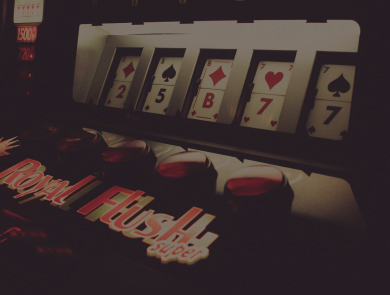How to Bet on Visual FX Categories in a Practical FX Comeback Era

A tangible shift is palpable in modern filmmaking, a pendulum swing back toward the authentic and the handcrafted. After decades dominated by the limitless possibilities of computer-generated imagery (CGI), audiences and filmmakers alike are rediscovering the visceral appeal of practical effects. This “comeback,” however, isn’t a simple rejection of digital wizardry but rather a complex fusion of old and new. For those looking to place a wager on the Academy Awards’ Best Visual Effects category, understanding this evolving landscape is more crucial than ever. It requires a new lens through which to evaluate contenders, one that appreciates both the artistry of in-camera illusions and their seamless integration with digital enhancements.
The Illusion of a Practical Effects ‘Comeback’
The narrative of a practical effects resurgence is a powerful one, often fueled by nostalgia and a sense of “CGI burnout” among moviegoers. Films like Christopher Nolan’s “Oppenheimer,” which famously recreated the Trinity Test explosion without CGI, and “Top Gun: Maverick,” with its real-life aerial maneuvers, have been lauded for their commitment to in-camera realism. This has led to a perception that practical effects are making a triumphant return to displace the digital dominance.
However, the reality is more of a hybrid approach. The most successful and visually stunning modern films often blend practical and digital effects so seamlessly that the audience can’t tell where one ends and the other begins. For instance, in “Dune,” the vast desert landscapes were a combination of real locations and meticulously crafted digital extensions, while the iconic sandworms were a masterful blend of practical rigs and CGI. Similarly, “1917” used practical explosions and elaborate lighting rigs to create its continuous-shot illusion, but digital effects were essential for stitching shots together and augmenting the war-torn environments. Therefore, the “comeback” is less about a return to purely analog techniques and more about a sophisticated integration that leverages the strengths of both.
Understanding the Oscar’s VFX Branch
To bet intelligently on the Best Visual Effects Oscar, one must first understand the voters: the Academy’s Visual Effects Branch. This group is composed of seasoned professionals—artists, supervisors, and technicians—who possess a deep understanding of the craft. Their voting process is meticulous, beginning with a shortlist of up to 20 films, which is then narrowed down to 10 finalists. These finalists are presented at a special event known as the “VFX Bake-Off,” where excerpts and “before and after” reels are shown to branch members. Following this, members vote to select the final five nominees.
Historically, the VFX branch has rewarded a variety of achievements. They often favor “invisible” effects that seamlessly blend into the film’s reality, but they also celebrate groundbreaking technology and large-scale spectacle. It’s a peer-review process, meaning the voters are looking at the work from a technical and artistic standpoint, not just as casual viewers.
The Synergy of Practical and Digital: The Modern Hybrid Approach
The most lauded visual effects today are often a testament to the powerful synergy between practical and digital techniques. This hybrid model allows filmmakers to ground fantastical elements in reality, enhancing believability and audience immersion. Practical effects, such as detailed miniatures, animatronics, and on-set explosions, provide a tangible reference for actors and cinematographers, leading to more authentic performances and lighting.
For example, “Blade Runner 2049” utilized extensive miniature models to create its dystopian cityscapes, which were then enhanced with digital elements to add flying vehicles and atmospheric effects. This approach gave the world a sense of weight and texture that would be difficult to achieve with purely digital creations. Similarly, “The Shape of Water” used a combination of a performer in a suit and digital enhancements to bring its amphibious creature to life, resulting in a character that felt both otherworldly and emotionally resonant. When betting, it’s crucial to look for films that don’t just use practical effects as a marketing gimmick but as a foundational element that elevates the digital work.
Analyzing the Contenders: A Bettor’s Guide
When evaluating the field for the Best Visual Effects Oscar, a multi-faceted approach is necessary. Here are key factors to consider:
- Scale and Complexity: The sheer scale and complexity of a film’s visual effects are often a major consideration. Films that create entire worlds, like “Avatar: The Way of Water” or “Dune,” often have an advantage due to the immense volume and intricacy of their effects work.
- Innovation and “Wow” Factor: Did the film push the boundaries of what’s possible in visual effects? Groundbreaking techniques, like the underwater performance capture in “Avatar: The Way of Water” or the de-aging technology in “The Irishman,” often capture the attention of voters.
- Seamless Integration: How well do the effects serve the story? The most successful visual effects are those that are so well-integrated that they become invisible, immersing the audience in the narrative without drawing attention to themselves.
- Critical Acclaim and Box Office Success: While not a direct factor, a film’s overall success can influence voters. A film that is a Best Picture contender or a box office smash has more visibility and is more likely to be seen and appreciated by a wider range of Academy members.
Case Studies: Learning from Past Winners and Snubs
Examining past Oscar races can provide valuable insights. “Godzilla Minus One” (2023) was a surprise winner, lauded for its incredible effects achieved on a relatively small budget, demonstrating that innovation and artistry can triumph over sheer scale. “1917” (2020) won for its masterful use of “invisible” effects to create the illusion of a single take, a testament to the power of VFX in service of a unique cinematic vision.
Conversely, “The Creator” (2023), despite being praised for its stunning and realistic depiction of androids, was ultimately a runner-up. This may have been due to its more modest box office performance and lack of broader awards recognition compared to the winner.
Ultimately, the smart bettor will recognize that the “practical effects comeback” is not about a return to the past but a move toward a more integrated and sophisticated future. The films that will triumph in the Best Visual Effects category will be those that masterfully blend the tangible and the digital, creating worlds and experiences that are not only visually stunning but also deeply immersive and emotionally resonant.







